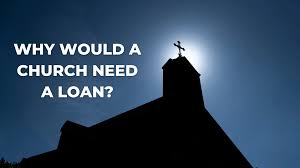Securing a church loan for your ministry or building project is a crucial step in expanding your mission and advancing the work of your church. Whether you’re seeking funding for a new church building, renovations, or outreach programs, understanding the process is essential to ensuring the financial success of your project. In this article, we will explore some key steps and tips to help guide you through the loan process, ensuring that your church can secure the necessary funding.
Understand Your Church’s Financial Health
Before approaching lenders, it is important to assess the financial health of your church. This includes reviewing your church’s budget, cash flow, and overall financial stability. Lenders will closely examine these factors to determine the likelihood of your church being able to repay the loan. Take a comprehensive look at your church’s financial statements, including income from tithes, donations, and other revenue sources.
It is also essential to have a clear understanding of your current debt load. If your church is already managing existing loans or financial obligations, this will factor into the lender’s decision. A strong track record of managing finances and paying off previous debts will work in your favor.
Define Your Loan Purpose and Project Plan
Clearly outline the purpose of the loan and provide a detailed project plan. Lenders want to understand how the funds will be used and the projected outcomes of the project. Whether you are constructing a new church building, expanding existing facilities, or funding a specific ministry initiative, having a clear, well-documented plan is crucial.
Be specific about the costs involved in the project. Break down the budget by construction, materials, labor, permits, and other expenses to give lenders a detailed understanding of how their money will be spent. A well-organized project plan not only helps lenders evaluate the loan request but also demonstrates your church’s commitment to responsible financial management.
Identify the Right Type of Loan
There are several different types of loans available to churches, each designed to meet different needs. Some of the most common types include:
-
Traditional Church Loans: These are loans from banks or credit unions specifically designed for churches. They are usually secured by property or assets and have terms that are tailored to churches’ unique needs.
-
SBA 504 Loans: The Small Business Administration (SBA) offers loans that can be used for property acquisition, construction, or improvement. While they are technically for businesses, they are sometimes available to nonprofit organizations, including churches, depending on the circumstances.
-
Church Financing Programs: Some lenders and financial institutions offer specialized loan programs for churches. These loans may have lower interest rates or more flexible repayment terms, making them more accessible for churches with limited financial resources.
-
Construction Loans: If you are building or renovating a facility, you may need a construction loan. These loans are typically short-term and are paid off as the construction progresses. After the project is completed, the loan may be refinanced into a long-term mortgage.
Ensure a Strong Loan Application
When applying for a church loan, having a comprehensive and professional application is key. Lenders typically require several pieces of information, including:
-
Financial statements: Provide your church’s recent financial statements, including balance sheets, income statements, and cash flow reports.
-
Tax-exempt status documentation: As a nonprofit organization, your church will need to provide documentation proving its tax-exempt status.
-
Project proposal: Include a detailed description of your project, its purpose, and how it aligns with the mission of your church.
-
Repayment plan: Lenders want to see how you plan to repay the loan. Provide a realistic plan based on your church’s income, including how much you expect to generate from donations or other sources of income.
Build Relationships with Lenders
Establishing strong relationships with potential lenders is a vital part of the process. It’s not just about the numbers on paper; lenders want to see the people behind the church and the vision that drives the ministry. Take time to build trust and communicate openly with your lender. A lender who understands your church’s mission and values is more likely to support your loan application.
Prepare for the Loan Approval Process
The loan approval process may take several weeks or months, depending on the lender and the complexity of your project. Be prepared for the lender to request additional documentation or information during this time. It is also important to review the terms of the loan carefully before signing any agreements.
Conclusion
Securing a church loan for a ministry or building project is a process that requires careful planning, transparency, and patience. By understanding your church’s financial health, defining a clear project plan, identifying the right type of loan, and submitting a strong application, your church will be well-positioned to secure the funding needed for its mission. With the right preparation, you can lay the financial foundation for a successful project that will support the work of your ministry for years to come.
